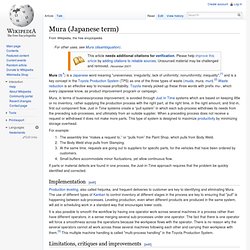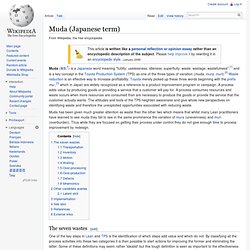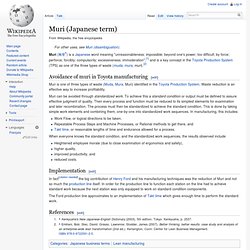

Mura (Variability) For example: The assembly line “makes a request to,” or “pulls from” the Paint Shop, which pulls from Body Weld.The Body Weld shop pulls from Stamping.At the same time, requests are going out to suppliers for specific parts, for the vehicles that have been ordered by customers.Small buffers accommodate minor fluctuations, yet allow continuous flow.

If parts or material defects are found in one process, the Just-in-Time approach requires that the problem be quickly identified and corrected. Production leveling, also called heijunka, and frequent deliveries to customer are key to identifying and eliminating Mura. The use of different types of Kanban to control inventory at different stages in the process are key to ensuring that "pull" is happening between sub-processes.
Leveling production, even when different products are produced in the same system, will aid in scheduling work in a standard way that encourages lower costs. Muda (Waste) One of the key steps in Lean and TPS is the identification of which steps add value and which do not.

By classifying all the process activities into these two categories it is then possible to start actions for improving the former and eliminating the latter. Some of these definitions may seem rather 'idealist' but this tough definition is seen as important to the effectiveness of this key step. Muri (Overburden) Muri can be avoided through standardized work.

To achieve this a standard condition or output must be defined to assure effective judgment of quality. Then every process and function must be reduced to its simplest elements for examination and later recombination. The process must then be standardized to achieve the standard condition.